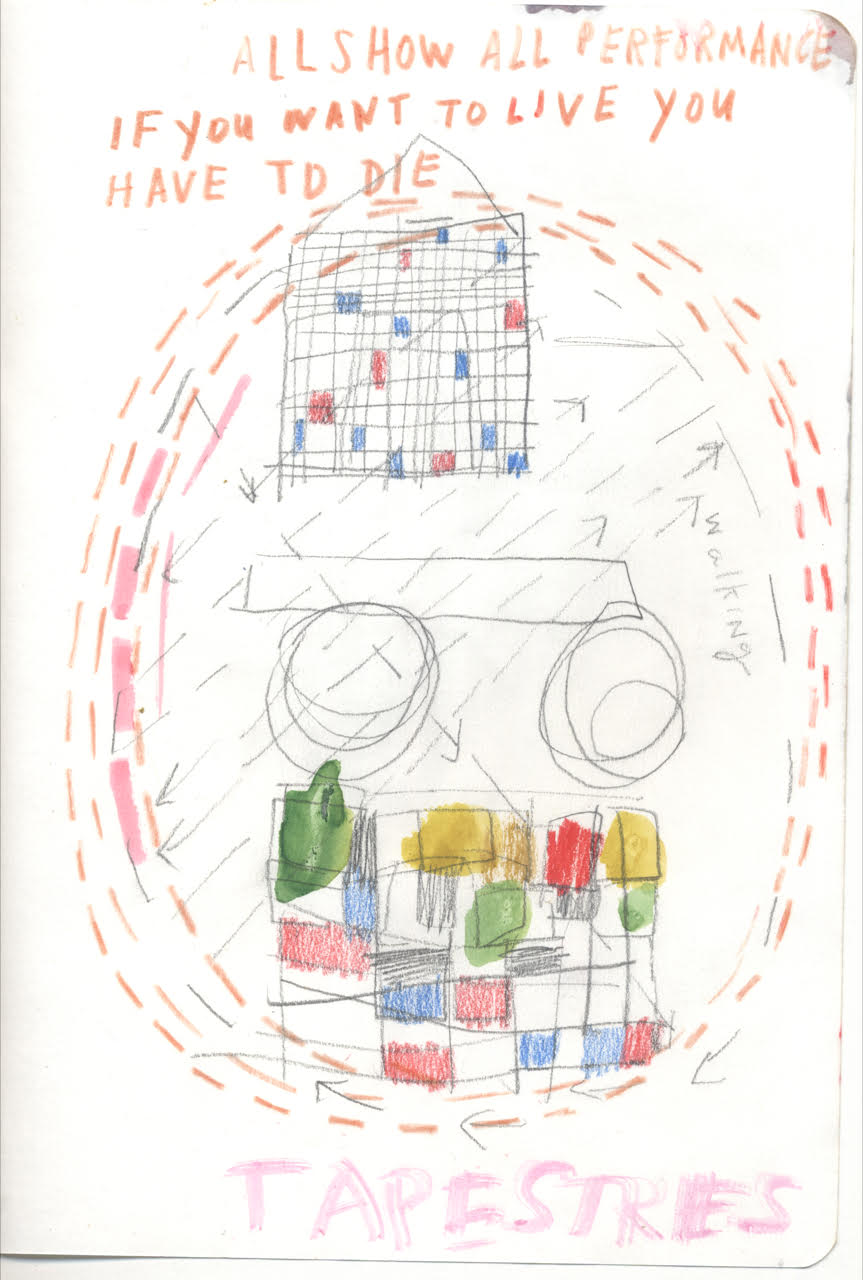
“I don’t believe in my name, or even in me existing.”
—Susan Cianciolo
Everything on earth is food: earth, water, fire, air, plant, animal, light. We eat rocks of salt, gulps of air, and forms of matter we can never digest, which we call fiber. Even our non-edible reality is our food: sound, touch, smell, vision, emotion, pleasure. All our senses require stimulation to remain finely tuned.
To navigate all of this experience, humans have created systems, usually based in religion, science, and spirituality. Ayurveda, for example, is a 3,000-year-old healing system from India, meaning “science of life.” Like western medicine, it involves doctors and medicine, but Ayurveda is also intended to be practiced at home, casually, by anyone. The philosophy of Ayurveda can be realized in cooking, daily routine, movement, prayer, hygiene, reading, herbs, self-massage, attitude, clothing, and every aspect of one’s life that can be named. It is a system for living fully.
Art can also serve this purpose, presenting a means for understanding all of our experiences and making our way through the world. In this way, art serves as an alternate system to the many rigid systems that invade our lives, including those ever pervasive governmental, academic, and industrial ones. An art system favors imagination over intellect, intuition over dogma. It uses observation, like science, and belief, like religion, but it makes no great distinction between the two. Instead of rules and dictums, it provides questions to be considered throughout the day: What do I eat? What do I wear? How do I live? How do I see? What do I feel? For artists who create such systems, the fundamental art is not the object but the network of principles that support it. At its best, the art object is an expression of these principles, these perennial patterns of reality as understood by the artist.
For three decades, Susan Cianciolo has been intuiting her own holistic art system. During this time, she has focused on the most fundamental art forms of culture: clothing and food. These are materials we all understand. We cannot escape them. We need them to survive, and so, naturally they ground everything Susan does. They are the foundation to her system. Sometimes she may entangle them—serving food at fashion shows, designing clothes for cooking—but in some form, they are always present.
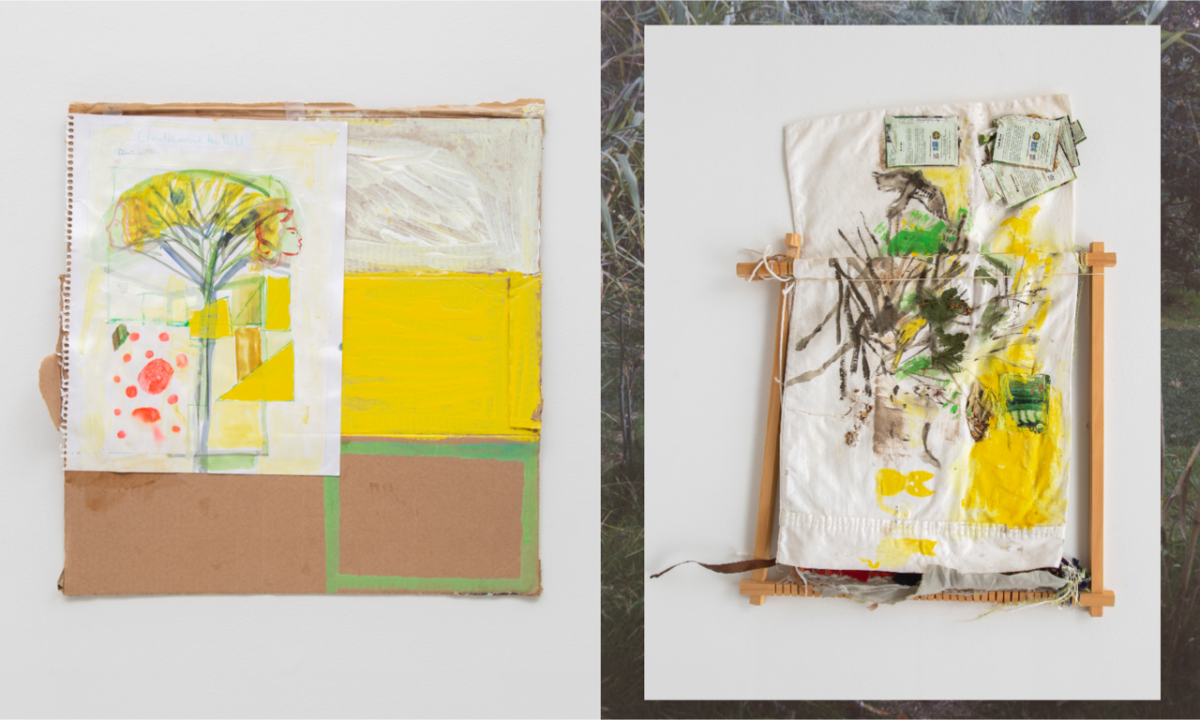
Like Ayurveda, Susan’s system understands the home as the locus of human life. Whenever I’ve visited her studio, it has always been at the very center of her home, literally, in what might be called the living room. This is conveniently adjacent to her other studio: the kitchen. But unlike most living rooms, Susan’s is always open and free of furniture. Paintings lay on the floor, drawings hang on the wall, clothes drape on racks, and handmade pottery sits on a windowsill.
In her exhibitions, Susan recreates this home studio with shed-sized structures of skeletal wood, art spread out on the floors or dangling from above. They look like chapels and attics but they feel like tree houses and secret forts: the small homes-away-from-home where children are allowed to escape and create their own private systems. This is how Susan invokes another one of the fundamental art forms: shelter—what the professionals call architecture.
Because of the studio’s central location in the home, Susan’s daughter, Lilac, is often around, doing homework, telling jokes, or collaborating on art with Susan. Now into teenagehood, Lilac has been Susan’s continuous collaborator nearly since her birth. It’s unlikely to attend any of Susan’s events and not find her daughter present in some form. Lilac’s art is mixed in amongst Susan’s paintings. She serves food. She mingles. She appears in photographs. At this point, she is inextricable from Susan’s work, because she is woven into Susan’s life. This is Susan’s expression of yet another fundamental art form: parenthood.
Parenting is a high-stakes kind of performance, created for a captive audience. Like art, it is done by each person in a singular way, and, at its root, it is a process rather than a product. The pianist Glenn Gould once said,“The justification of art is the internal combustion it ignites in hearts in men and not its shallow, externalized, public manifestations. The purpose of art is not the release of a momentary ejection of adrenaline but is, rather, the gradual, lifelong construction of a state of wonder and serenity.” One could say the same thing about parenthood.
This is how Susan transforms white-walled gallery spaces into a place of warm home energy: she introduces you to her family and she arranges her work like a picnic. She gives you clothing for dressing up, and when she hangs her paintings on walls, they look less like a collection of finished, rarefied pictures than portals into their maker’s ongoing process. Seeing a show by Susan is like stepping into someone’s home for the first time, witnessing the intimate artifacts of a life as it is being lived.
And yet Susan’s gestures are not entirely cozy. “Domestic” is not the right word here, with its whiff of complacency. There’s something transgressive in the way Susan flagrantly disregards the boundary between home and art. It’s a simultaneously vulnerable and stoic attitude she maintains, revealing but never pandering. You feel this in the rawness of the work, its imperfect corners and relaxed seams. These are not just materials, of course, but artifacts from an entire system of art.
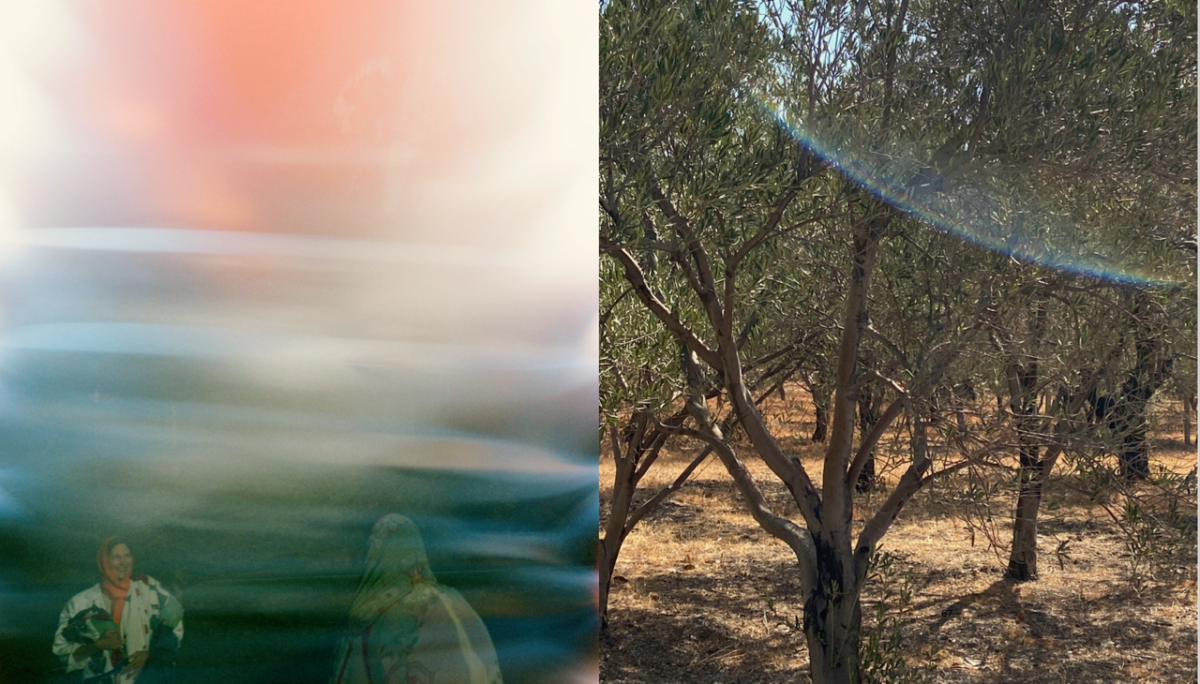
Taken together, clothing, architecture, food, and (for some) parenthood are the cornerstones of a human life system. This addresses the materials that both surround and enter the body. But a full system must also address the body itself—its rhythms. Susan heeds Hippocrates’ advice: food is medicine. Like Ayurveda, the ingredients in Susan’s cooking are a marriage of flavor and function: cinnamon heats the body; coriander cools it; popcorn dries the body; oil lubricates it. These are seasonal principles of the earth. Cooking is a transmission of energy.
In fact, this may be the most foundational of all the forms for Susan: the healing arts. For her, every painting, article of clothing and dish of food is, most importantly, a work of healing. She began thinking this way two decades ago, when she was thirty-three, after a near-death experience which has rippled throughout her life since. In the years that followed, she stepped away from New York, the center of her industry, and began studying hands-on techniques of healing such as Reiki, a technique invented in Japan in the early 20th century. She began practicing on herself, her family and her friends, but, as she pointed out to me, “never in exchange for money.”
Perhaps this is why Susan’s work often bears the trace of her hand. No one would misread her clothing as factory-made, her paintings as fabricated, or her short films as studio-produced (all procedures intended to erase the evidence of the hand). Her fabric and her paper have been visibly felt, crumpled, and rubbed. Susan wants to remind the viewer of her handedness, because these hands saved her. In this way, the work always contains a fingerprint from her experience of momentary death. Since then, she refers to her process of making art as a way of “being with angels.”
As with the artwork, Lilac often helps Susan with healing. “Her work is better than mine,” Susan tells me, “because she’s so clear. She’s been in this energy with me since she’s born. I’m still clearing out all my junk, all my brainwashing. But a child has no junk. She just believes one hundred percent.” Susan will even use this healing for what she calls “silly things” like a school art project in which Lilac created snow globes. “If that’s important to her,” Susan says, “I don’t see why I wouldn’t use it.”
When Susan was a child with such pure beliefs, she turned to religion. At age four, she walked to a nearby Pentecostal church and firmly decided to dedicate herself to worship. “This was the kind of place where people chanted in tongues and fell back and the spirit would catch them,” she says. She spent years attending mass and studying the Bible. She had visions of celestial beings coming to her in the night and prayed for her mother’s soul to be saved. She was naturally spiritual. “That feeling was always with me,” she says, “even before I put it into the work.”
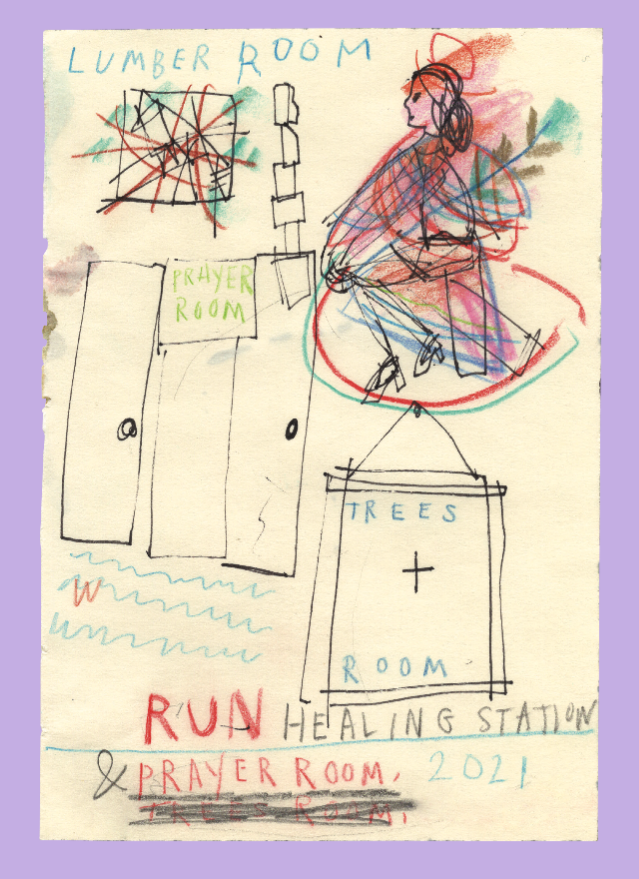
As a teenager, she drifted away from religion, as people tend to do at that age. When she was twenty, she found it again, in meditation. “But at that point,” she tells me, “I was more interested in subversion against the government. It was more about being punk and less about religion.”
And the punk has not faded in Susan’s work. Her relationship with DIY culture remains strong. Her clothing borrows equally from craft traditions like quilting and roughly screen-printed punk shirts. Her paintings are collaged like concert flyers. Even the modest installation style of her exhibitions diffuses the constructed elitism of the art world, inspiring a feeling of liberated agency in the viewer, as if they, too, could make this work.
In fact, much of Susan’s work is literally showing the viewer how to do it themselves: in the recipes featured in this book, in her instructional videos, and her many “kit” works (small boxes filled with sundry materials of art-making popsicle sticks, cut-up magazines, swatches of muslin). These are not closed works, decided and done, but friendly propositions for collaboration.
Susan is also a professor at Pratt Institute in Brooklyn, where she teaches the “intersections of performance and fashion.” There, her natural tendency toward DIY guidance can take on a professional, structured format. Teaching is certainly another one of the essential art forms of life—the pedagogical arts—though it is rarely regarded as one. However, many artists, including Joseph Beuys, Sister Corita Kent, Marguerite Wildenhain, Paul Klee, Rirkrit Tiravanija, and Trisha Donnelly have approached their teaching practice as another manifestation of their personal system of art.
A few autumns ago, Susan invited me to talk with the students in her class. I was also teaching at the time, so I paid special attention to her light presence amongst students, how she suggested without authority and offered instead of assigned. I noticed how she navigated the classroom like a director, allowing students to do what they needed while she focused on steering the group as a whole.Instead of dominance, she gave the students her awareness, which is a great lesson for any student, since awareness is the primary medium for any artist.
Awareness could be called the great passive art, and perhaps the most fundamental art form of all. Receiving is simply more essential than producing—art, as we all know, is in the eye of the beholder. Teaching is not just about lecturing, but understanding the process of learning and how knowledge passes from one mind to another. Likewise, making art is about feeling; cooking is about tasting. Every form needs to be received by both its maker and by an audience. The complete artist understands this. They spend their energy growing increasingly sensitive to the world of endless stimulations.
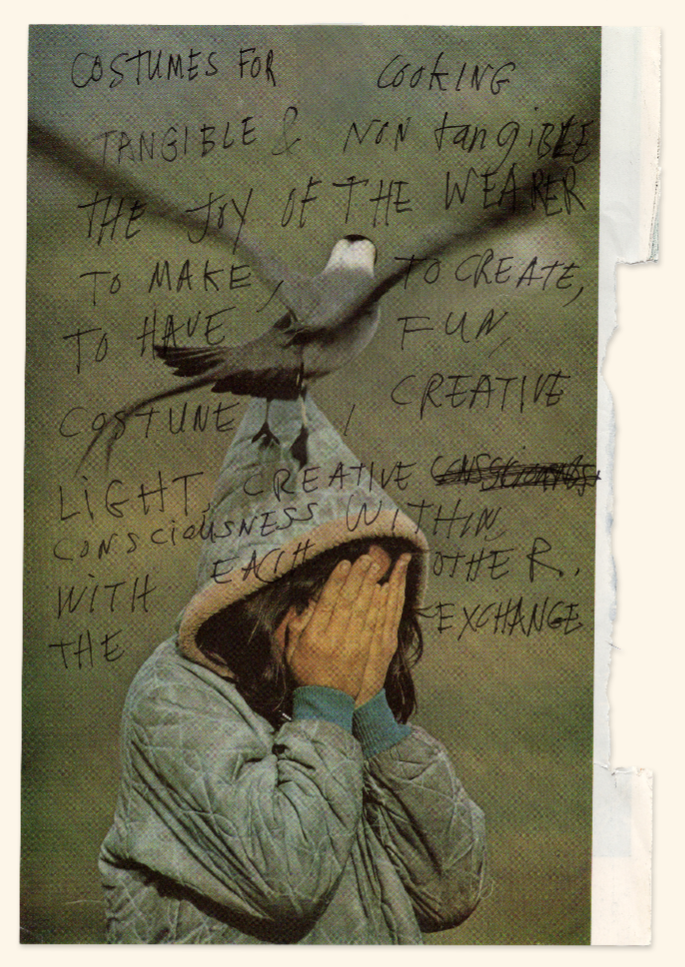
In Ayurveda, the word for such stimulations is impressions. These could include the sounds of a neighbor screaming, a heavy conversation with a friend, a loud concert, a soothing bath, a photograph on social media; all stimuli must be assimilated and excreted by its receiver. It’s all food. We consume our media. A viewer digests a heavy drama on television. Like a rich, complex meal, it passes through your entire system, showing up in memories and dreams and may even leave a trace inside of you.
Susan is a sensitive and she is keenly attentive of the power of impressions in her life. Such awareness is a blessing and a curse. Susan avoids sweets, art openings, and dark narratives, knowing how each of them will disrupt her life and work. “I remember when a healer came to my loft and saw all these violent paintings on the wall,” she says, “They told me, you can’t live with all these. So I turned them all around.”
Early on in her career, Susan felt these effects when she was making film, which can be one of the most stimulating of the arts—music, visuals, language and story all at once. “I watched insane stuff,” she says, “but now I don’t want to deal with the consequences of that. It even happened in my own films. But I would never play with that kind of fire again. Whenever my early work is shown, I just step out of my body, because I can go back there.”
This sensitivity has also begun to transform the work, as she has begun making choices for other sensitives in the world. “It’s why I stopped making things to be worn,” she says. “Back then, I didn’t understand the implications of putting my clothing on people.”
This kind of awareness also goes beyond the physical plane. Since her near-death experience two decades ago, Susan’s spirituality has grown deeper and more complex. Like many artists before her, she is a channeler, and for her, the spirits that direct her come from the Pleiades, an open star cluster 444 light years away, part of the Taurus constellation. She feels a relationship to this place, and considers it her true home. She seems to make no distinction between heavenly and extraterrestrial beings. For her, this wild ride of being a human being is temporary and life is the experience of flying through states that she calls dimensions.
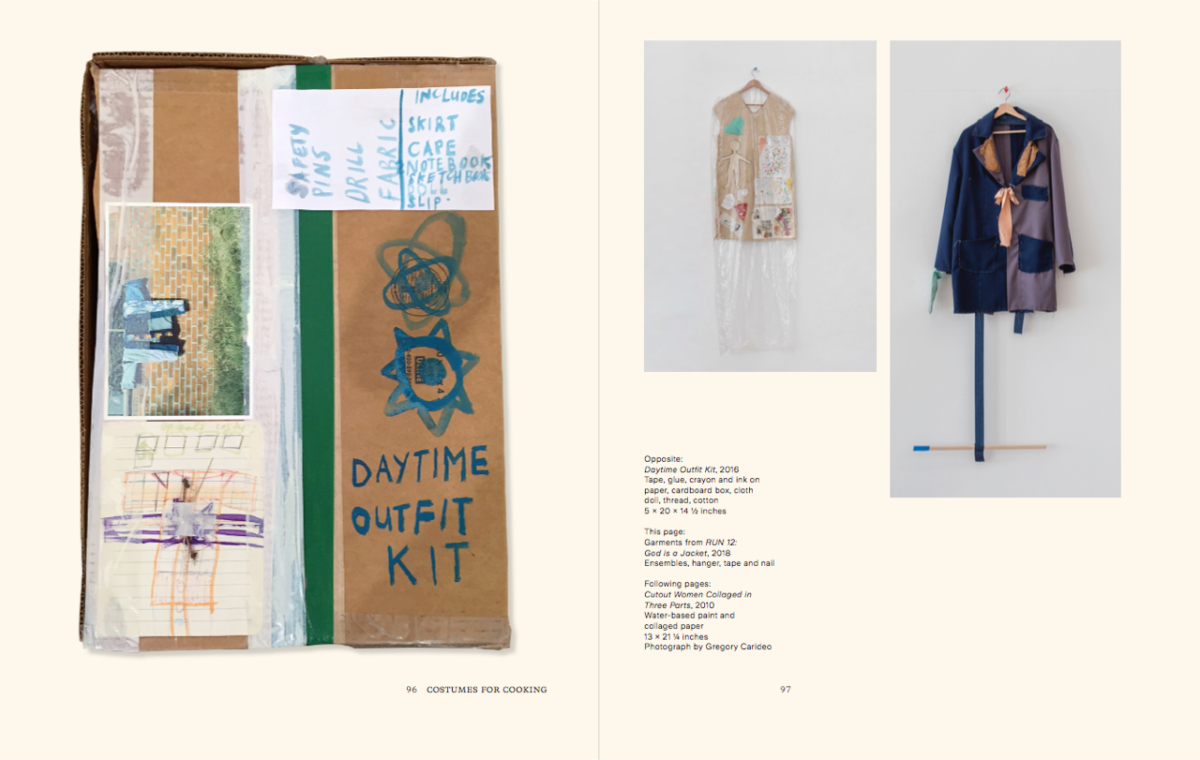
“We are going into the fifth dimension,” she says. “Those of us who are meditating are abolishing the dark forces, including the government. This chaos around us is created on purpose to put us into fear. We have the ability to heal ourselves. Fear is our only obstacle.”
Susan’s work is a testament to her stance against fear: continuously exploring new forms and embracing change. Recently, at fifty-one, she has joined a modeling agency, a new career for her. Modeling is an activity she’s done in casual ways for years, but will now do professionally. This is the next art to enter into the Cianciolo system: a form that favors being rather than doing.
As Susan told me about the book for which I would be writing this essay, she said, “I wonder if this is going to be my last project ever.” Her tone was calm and gentle, as if she were asking herself a question that had just occurred to her. It’s certainly a reasonable consideration, and one that many artists debate repeatedly. But after a moment of consideration, Susan laughed at the idea. Of course, one day, she may indeed decide that she has released her final exhibition or clothing line or book, but her true project is the unending art of expansion.
This essay was published on the occasion of Susan Cianciolo’s exhibition, PRAYER ROOM, HEALING STAtion at Lumber Room in Portland, Oregon.




